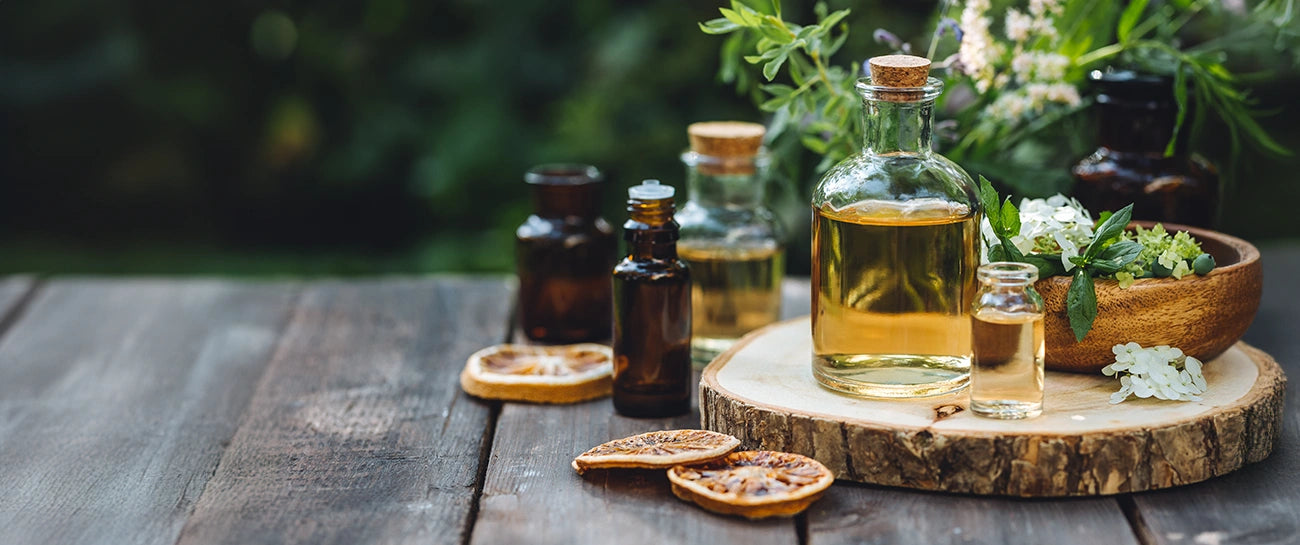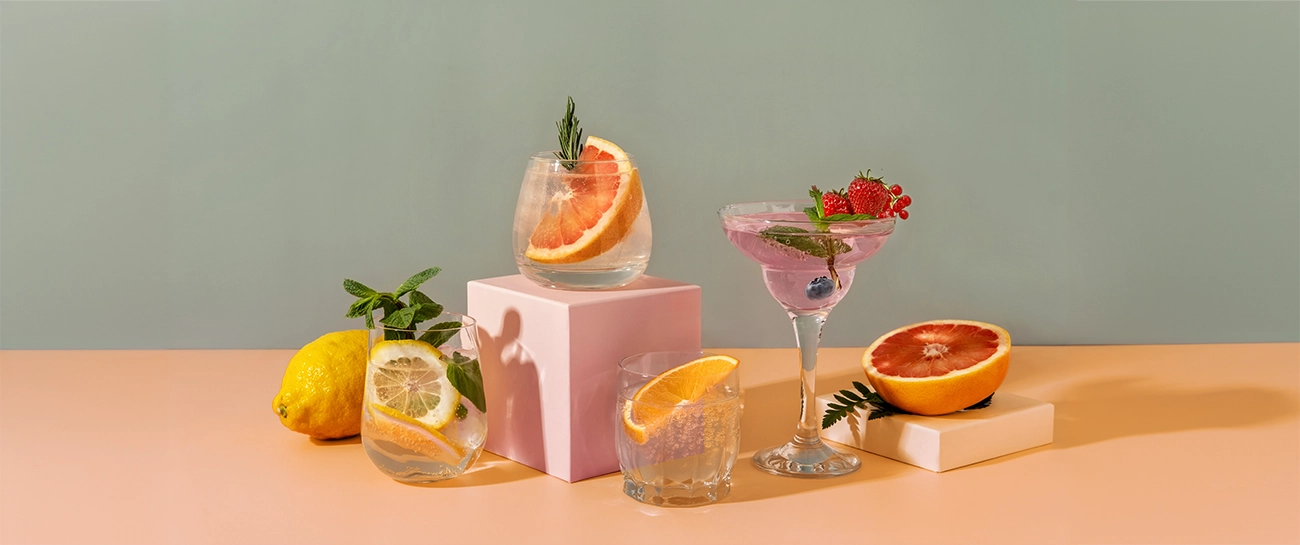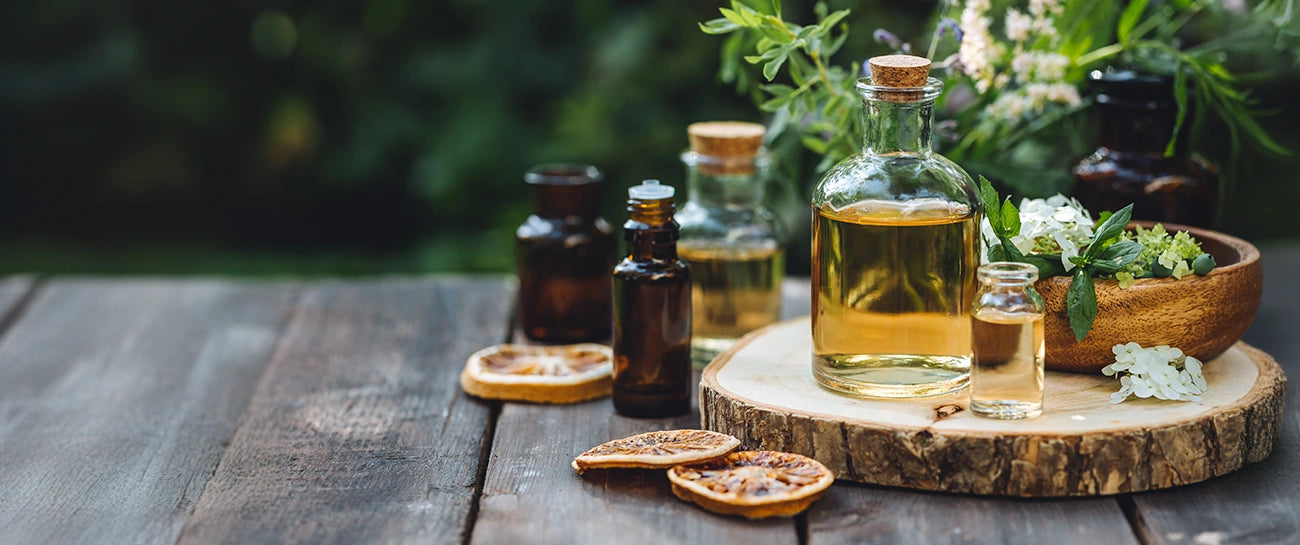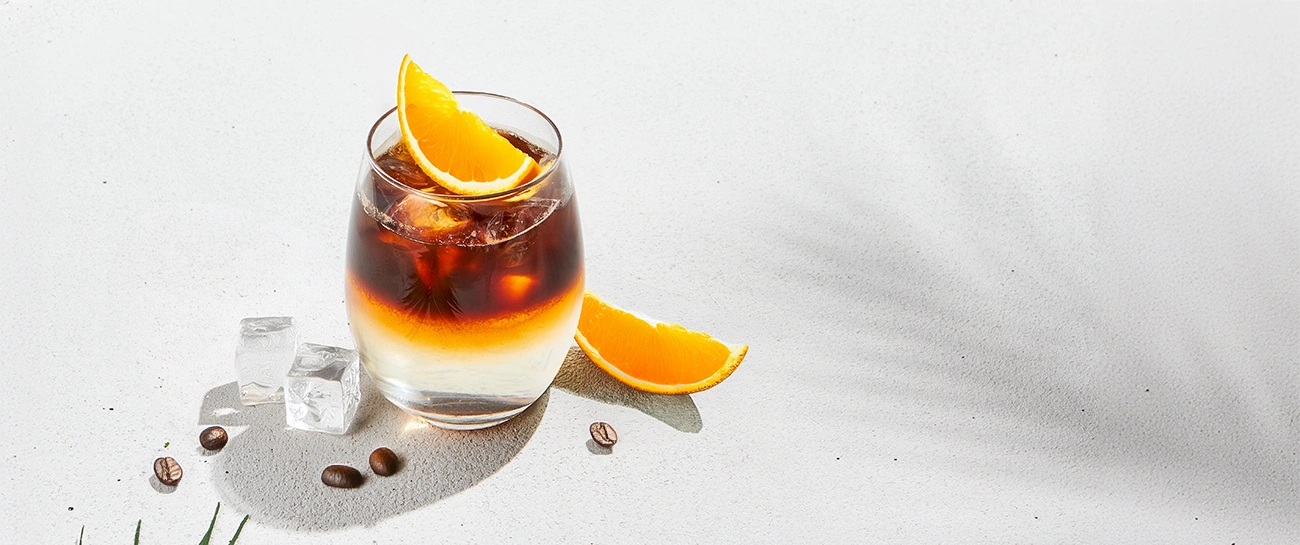Drinking enough water is not that easy - because at best it tastes neutral. However, our palate prefers fun and excitement, which is why it helps to add interesting flavors to water. And to keep it healthy, these should of course be natural! You can do this with fruits, herbs, spices and: natural flavors!
Not all flavors are the same
Flavors do not have the best reputation. This is because most flavors in food, beverages and infused water products are artificial. To make matters worse, they often come in the form of an unhealthy, unpleasant bunch with lots of sweeteners, preservatives and colorants. Not with us. We are purists and like healthy things that are still fun to eat. That's why we use no colorants, no sweeteners and only natural, vegan flavors for our Waterfusions. But what exactly is natural flavoring? And how is it produced?
Table of contents:
- What exactly are flavors?
- How are aromas perceived?
- How are flavors labeled?
- Artificial flavor
- Natural aroma
- How is natural flavoring produced?
- How much flavor does a food contain?
- Are flavors healthy?
By the way: OH LA LAQUA's Natural Waterfusions enriched with natural flavors are now available in over 20 flavors - from pear & thyme to peach & orange blossom to lemon. All Natural Waterfusions are free from sugar and sweeteners and taste really good even without artificial nonsense! Would you prefer to make your infused water with fresh ingredients? We have collected various recipe ideas for you in our blog article Infused water: 5 recipes for refreshing fruit water.
What exactly are flavors?
Flavors give food its typical taste and smell. They are formed in the normal metabolism of living animals and plants or are created during the production and preparation of food. For example, when garlic is cut, enzymes release the aromatic substances it contains. Microorganisms ensure the same result during the fermentation and maturation of beer, yoghurt or sauerkraut: aromatic substances are released. Heat also produces aromatic substances during cooking, frying and baking. When frying onions or meat, for example, these are the fragrant roasted aromas. Flavorings can be extracted from food or produced artificially.
A flavor is typically made up of a large number of flavoring substances. The aroma of a raspberry, for example, consists of more than 200 different aromatic substances. This complex mixture includes aldehydes, ketones, alcohols, esters and terpenes, which together create the characteristic raspberry scent and taste.
How are aromas perceived?
We all know it: when we have a cold, not only do we smell bad, but our favorite food doesn't taste like much either. This is because we perceive aromas on the tongue and in the nose.
Our tongue is responsible for the main flavors: sweet, sour, bitter or salty. However, we only perceive fruity flavors, for example, when we swallow, when the aromatic substances enter the nose via the throat.
How are flavors labeled?
The European Flavoring Regulation (EC) No. 1334/2008 and the Food Labeling Regulation (EU) No. 1169/2011 regulate the labeling of flavorings for products that can be purchased in Germany and the EU. The following applies: In the list of ingredients, flavorings must be labeled at least with the general term flavoring; however, more precise designations are also permitted.
The term "natural" may only be used to label flavorings if they are obtained by physical (e.g. distillation or extraction), enzymatic or microbiological processes (fermentation). In addition, only natural raw materials may be used as source materials.
Let's explain it in more detail using raspberry flavor:
Artificial flavor
If the list of ingredients simply says "flavoring", it is most likely a chemically produced, synthetic or artificial flavoring that tastes like raspberries. You can often taste the "artificial" in it.
Natural aroma
Natural flavorings give foods a raspberry taste, but do not have to come from raspberries, i.e. not from the fruit that gives them their name. "Natural flavors" can be obtained from plant, animal or microbiological raw materials. They do not contain any synthetic additives!
A natural flavor that tastes like raspberries can come from cedarwood oil, for example. This is possible because cedarwood oil contains certain chemical compounds that are also found in raspberry flavors. One of these compounds is raspberry ketone, an aromatic compound that is responsible for the characteristic raspberry scent. It can be isolated from cedarwood oil by extraction.
By the way: For OH LA LAQUA Natural Waterfusions, we only use natural flavors from plants. This is why all our products are 100% natural and vegan, even if the flavors do not always come from the fruit that gives them their name.
Natural raspberry flavor
If you see "natural raspberry flavoring" on the list of ingredients, this means that at least 95% of this flavoring must come from raspberries, i.e. from the fruit that gives the product its name. The remaining 5% can be of other natural or non-natural origin. They are used to supplement the flavor or to compensate for natural variations and often set the tone in terms of taste.
Combinations of different flavorings can be declared together, for example as "natural raspberry and mint leaf flavor". Once again, 95 percent of the flavoring ingredients must come from the source materials mentioned.
If less than 95 percent of the named ingredient is used, this is indicated on the packaging by the words "natural raspberry flavor with other natural flavors".
Raspberry extract or raspberry oil
Raspberry extract or raspberry oil is made from 100 percent raspberries. In an extract, the flavorings are extracted from the raw material using solvents such as water or alcohol, whereas oils are usually pressed.
How is natural flavoring produced?
Natural flavors, such as those we use for OH LA LAQUA's liquid flavors, are produced using various processes. These include various processes such as cold pressing, fermentation, distillation, extraction or maceration. Below you will find an overview of these processes:
Cold pressing
Cold pressing is a common method for extracting essential oils from the peel of citrus fruits such as oranges, lemons and limes. The peels are mechanically pressed to release the essential oils. This process takes place at low temperatures to preserve the integrity of the aromas and prevent oxidation. The result is a highly concentrated aroma that tastes intense and unadulterated.
Fermentation
In fermentation, flavorings are produced by microorganisms (e.g. acetic acid bacteria) or formed with the help of enzymes. Sugar-containing solutions are often used as the basis, which are converted by the microorganisms into the desired natural flavoring agent. Fermentation processes are known from beer brewing, bread baking and sauerkraut production. Here, lactic acid bacteria or yeasts are active, which lead to the development of the flavoring substances typical of the product. After fermentation, the desired natural flavoring is separated by a physical process.
Distillation
Distillation is another process for extracting natural aromas, particularly from herbs and flowers. In this process, the plant material is heated with steam, which releases the essential oils and collects them in a condenser. This method ensures that the volatile components of the plants are retained, resulting in pure and intense aromas.
Extraction
During extraction, the flavorings are dissolved out of a natural raw material (e.g. root) with the help of a solvent (e.g. alcohol). This means that the flavoring substances are transferred from the raw material to the liquid. To speed up this process, the mixture can be boiled under certain conditions. This is comparable to the preparation of coffee or tea. The result is a natural mixture of volatile and non-volatile substances from which individual natural flavorings can be isolated by distillation.
A modern and environmentally friendly approach is supercritical CO2 extraction. In this process, carbon dioxide is put into a supercritical state under high pressure and at a low temperature, in which it has both gaseous and liquid properties. This CO2 penetrates the plant material and extracts the aromatic substances. The pressure is then lowered, causing the CO2 to evaporate and leaving behind the pure aroma. This method is particularly gentle and preserves the sensitive aromatic substances unchanged.
Maceration
During maceration, the plant components are soaked in a solvent to slowly release the aromatic compounds. This technique is often used in the production of herbal aromas and fruit essences. The longer soaking time ensures that all aromatic components are extracted, resulting in a full-bodied and rich aroma.
How much flavor does a food contain?
If you want to know how high the proportion of flavors in a food is, you can use the list of ingredients as a guide. The main ingredients with the highest percentage by weight are listed at the beginning. The further back the ingredients appear in the list, the lower the amount contained in the respective product.
Are flavors healthy?
Every flavoring must be harmless to health. This is why flavorings are tested and approved by the European Food Safety Authority (EFSA) before they are used. Only approved flavorings may be used in food.
Conclusion: Creating natural flavors is an art - a bit like creating perfumes. They are a composition of natural substances that together produce a specific taste. This is often more intense and multi-layered than the pure aroma of the eponymous fruit.
We at OH LA LAQUA are pretty passionate about our natural flavors and are only satisfied when the taste of a new flavor really knocks our socks off. That was also the case with our raspberry.
No raspberry ice cream, no sherbet, no jelly, no chewing gum - just raspberries, as if freshly picked from the bush. And oh la la: et voilà! See for yourself💕.





